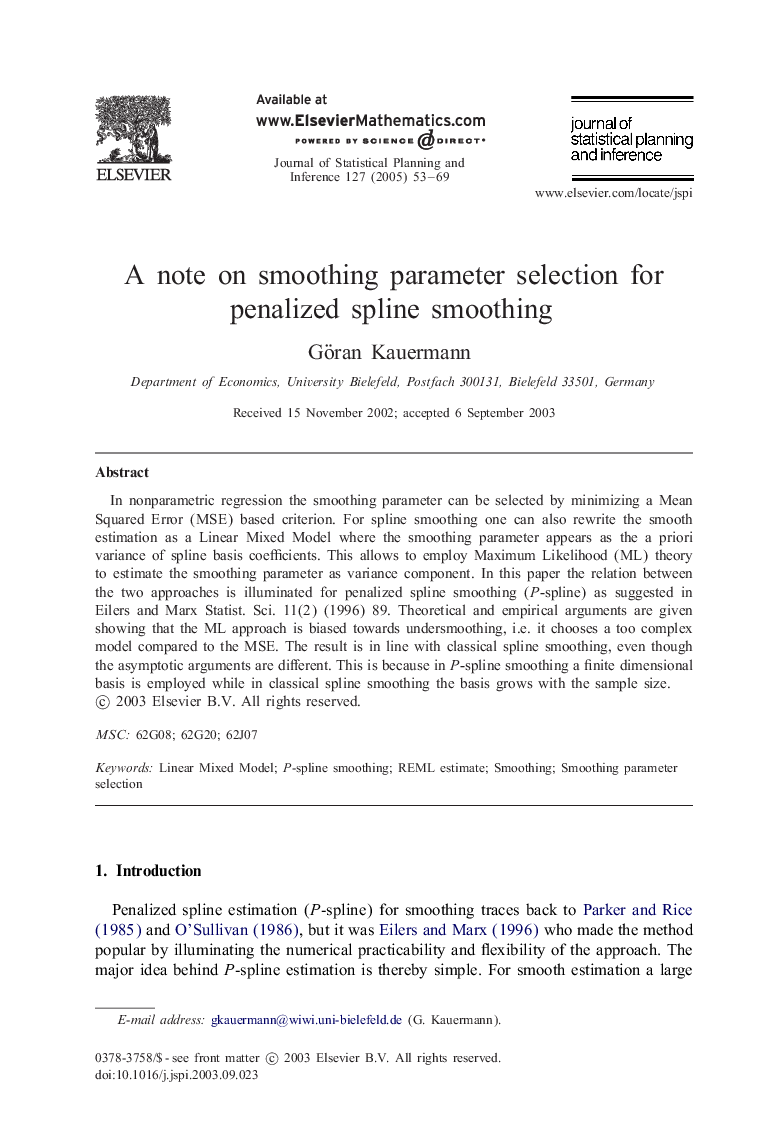| Article ID | Journal | Published Year | Pages | File Type |
|---|---|---|---|---|
| 9741814 | Journal of Statistical Planning and Inference | 2005 | 17 Pages |
Abstract
In nonparametric regression the smoothing parameter can be selected by minimizing a Mean Squared Error (MSE) based criterion. For spline smoothing one can also rewrite the smooth estimation as a Linear Mixed Model where the smoothing parameter appears as the a priori variance of spline basis coefficients. This allows to employ Maximum Likelihood (ML) theory to estimate the smoothing parameter as variance component. In this paper the relation between the two approaches is illuminated for penalized spline smoothing (P-spline) as suggested in Eilers and Marx Statist. Sci. 11(2) (1996) 89. Theoretical and empirical arguments are given showing that the ML approach is biased towards undersmoothing, i.e. it chooses a too complex model compared to the MSE. The result is in line with classical spline smoothing, even though the asymptotic arguments are different. This is because in P-spline smoothing a finite dimensional basis is employed while in classical spline smoothing the basis grows with the sample size.
Related Topics
Physical Sciences and Engineering
Mathematics
Applied Mathematics
Authors
Göran Kauermann,
